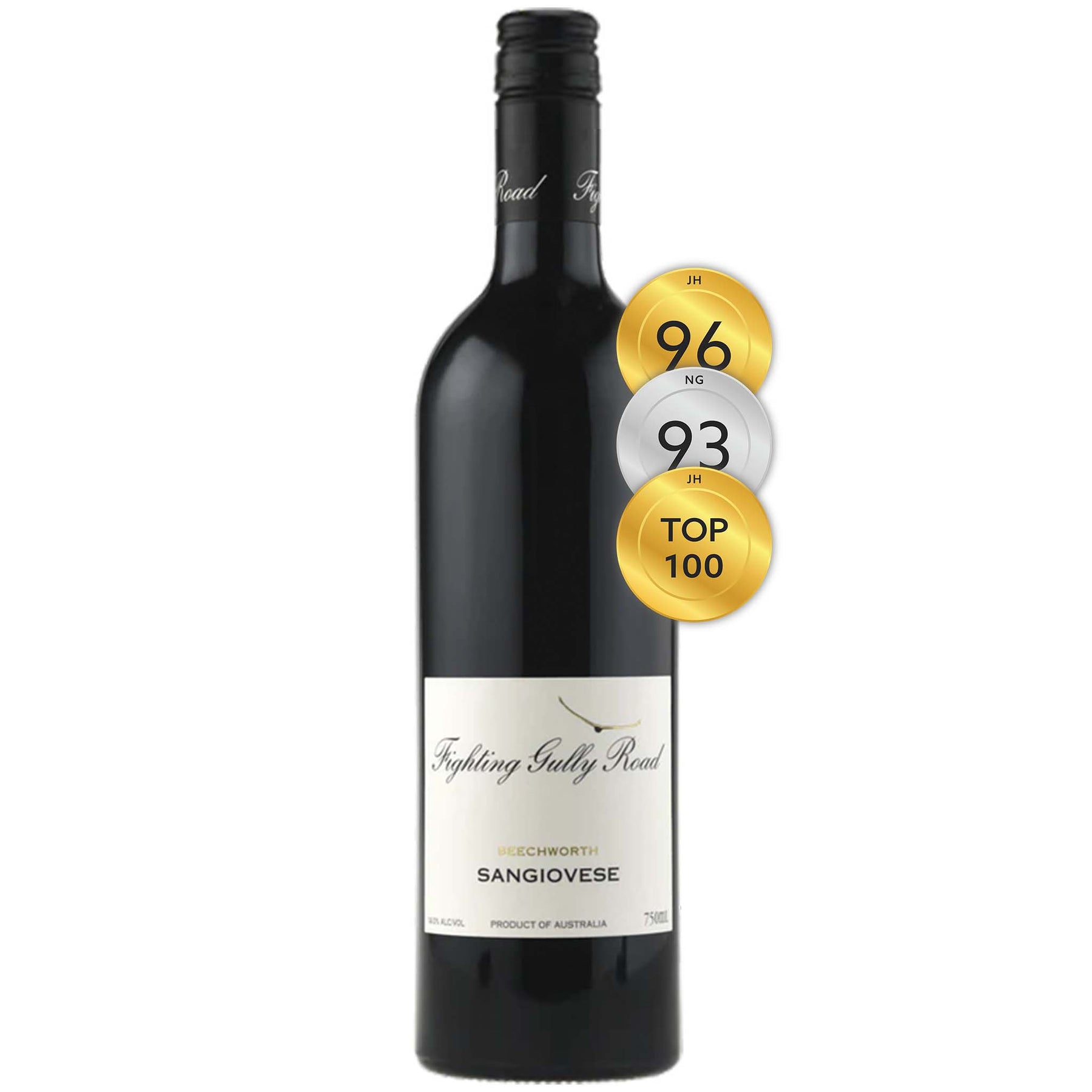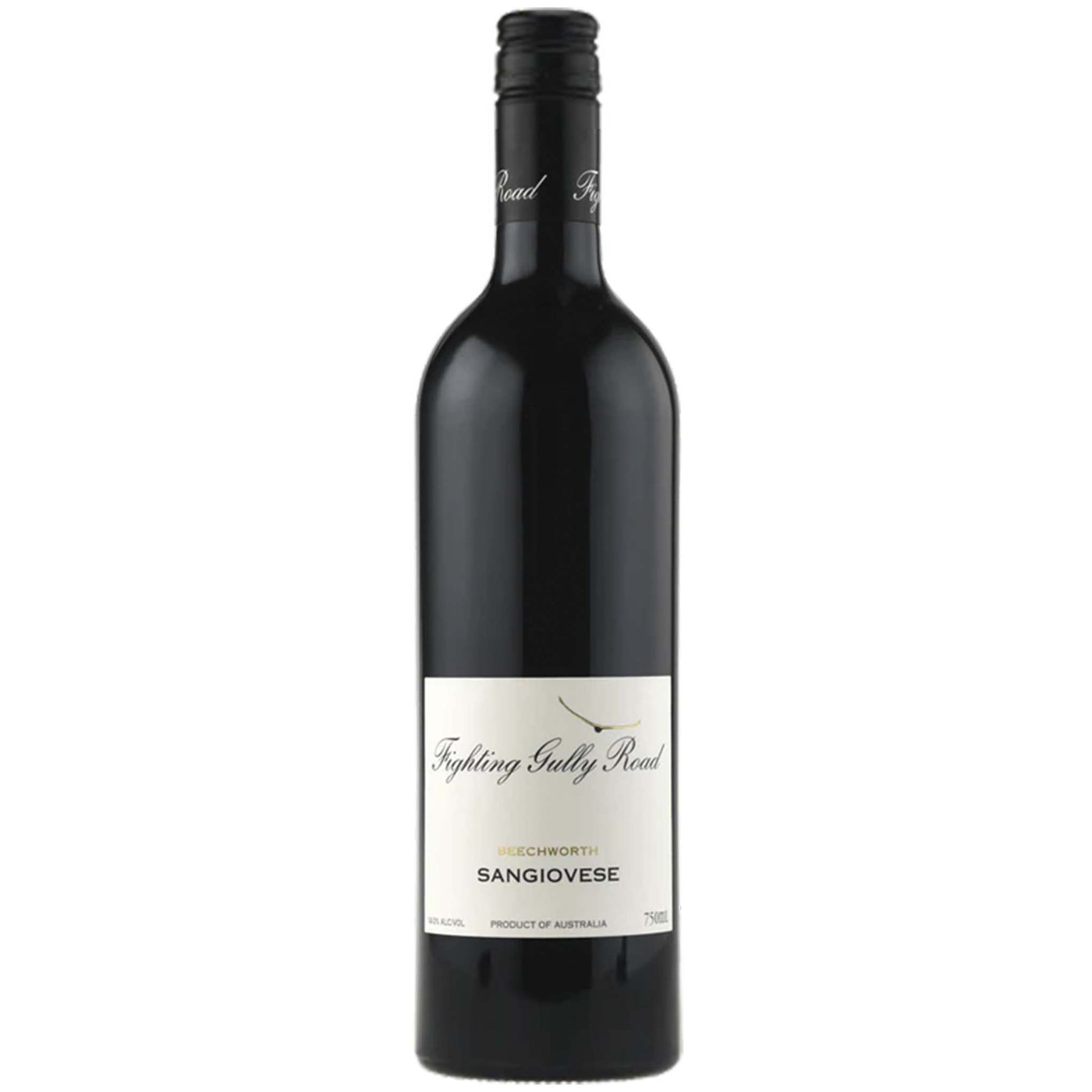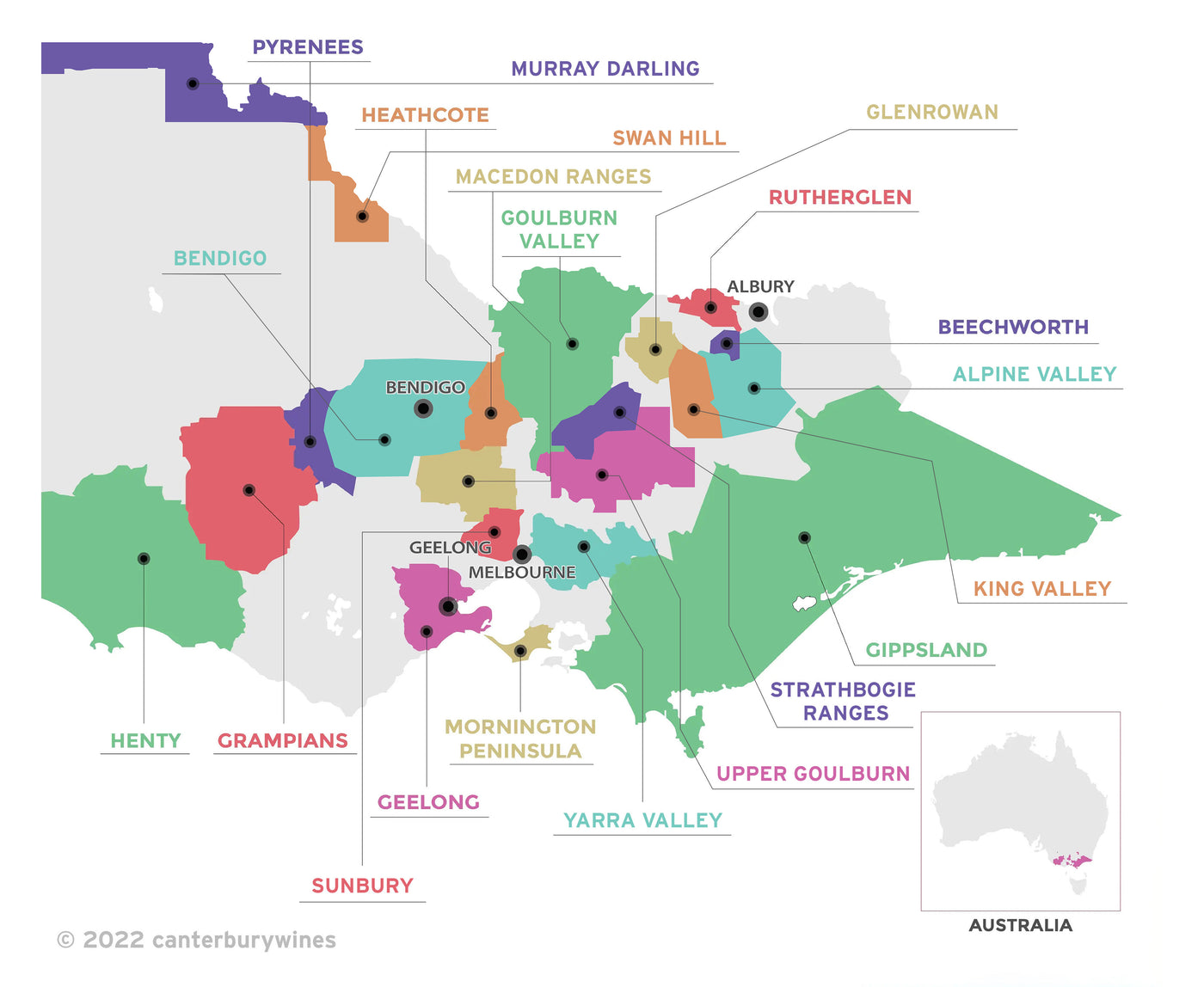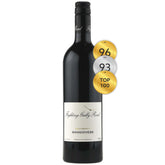

Fighting Gully Road Sangiovese 2022
Style: Red Wine
Closure: Screwcap
Fighting Gully Road Sangiovese 2022
Warehouse
34 Redland Drive
Vermont VIC 3133
Australia
Critic Score: 96
Alcohol: 14.0%
Size: 750 ml
Drink by: 2032
James Halliday Top 100 Wines of 2023
Fighting Gully Road is a boutique winery and vineyard in the Beechworth region of northeast Victoria established by well-known viticulturist and winemaker Mark Walpole. The vineyard is at an elevation of 530-580 meters above sea level, its steady slope rising to the top of the escarpment that overlooks the fertile Murmungee basin.
Bright, clear crimson colour; it has a delicious sour cherry, raspberry and black pepper blend, the palate harmonious, juicy, and as fresh as a daisy." James Halliday
Sangiovese is perhaps the best performing variety on the Fighting Gully Road site. Mark has been involved with the growing and making of Sangiovese since the late 1980s. After numerous trips to visit vineyards in Tuscany, Mark decided that the shaley soils and mild climatic conditions at the Fighting Gully Road site were ideal for this variety. Grafted to the newest mix of clones, the vines produce strongly flavoured and intensely aromatic wines. There is 5% Colorino in the mix which is a classic Tuscan touch.
"A bouquet of brambly dark berries, sour cherry and plum with nuances of savoury dried herbs. A medium-bodied palate, with plush lingering fine-grained tannins. Matured for 12 months in seasoned Italiancoopered, French oak casks (1500-2000L)." Fighting Gully
Expert reviews
"Includes 5% colorino, an old Chianti variety. The wine spent 28 days on skins, then matured in Italian-coopered large casks. Bright, clear crimson colour; it has a delicious sour cherry, raspberry and black pepper blend, the palate harmonious, juicy, and as fresh as a daisy. Drink to 2032." James Halliday, The Weekend Australian - 96 points and Top 100 Wines of 2023
"This mid-weighted sangiovese is so good, I can't believe it isn't from somewhere Etruscan and far away. A dollop of colorino in the mix. There are loads of Italians in these sub-alpine parts.The vibe was always there. The clones, however, were not. Until recently. Succulent red cherry, ume, dried thyme and dill, or at least something cool and refreshing, glossing the pushy finish. A framework of gently edgy tannins, chalky and refined. The acidity, frisky and juicy. Lovely drinking for the earlier to mid-term. Screw cap." Ned Goodwin MW, JamesSuckling.com - 93 points
Awards
James Halliday Top 100 Wines of 2023
Mark Walpole
 Mark Walpole is heralded as one of Australia's greatest viticulturists. Gourmet Traveller has named him 'Perpetual Viticulturist of the Year', an award reserved for only the most seasoned and accomplished grape growers in Australia.
Mark Walpole is heralded as one of Australia's greatest viticulturists. Gourmet Traveller has named him 'Perpetual Viticulturist of the Year', an award reserved for only the most seasoned and accomplished grape growers in Australia.
Mark studied farm management in school before finding a job with Brown Brothers, one of the largest vineyard holders in Victoria. At Brown Brothers, Mark worked his way up to chief viticulturist, and gained experience with nearly every grape in every microclimate of Victoria. While still with Brown Brothers, Mark purchased his own land in 1995 and established Fighting Gully Road.
"Mark has a rare understanding of aspect, soils and cool-climate grape growing. His Fighting Gully Road vineyard reflects his skill at planting varieties on the slopes and soils that allow them to sing in their finest voice." Nick Butler, The Real Review
In 2019 Mark took out the inaugural Viticulturist of the Year award at the Australian Alternative Varieties Wine Show (AAVWS). The award recognised Mark's contribution to the development of alternative varieties in Australia. For example, he changed the face of Sangiovese in Australia after a chance meeting with fellow vigneron Alberto Antonini on an international flight in 1997. The H6V9 Sangiovese clone that existed in Australia from the 1960s until that time was a disappointing imitation of the real thing. It had been selected because it was high yielding but it was very difficult to make a good wine with it.
In an effort to improve the quality of Sangiovese in Australia, Mark and Alberto embarked on an adventure to bring the good stuff down under. "We brought in a whole pile of new Sangiovese clones and other Italian stuff”, says Mark. "A lot of those clones we brought in were from really, really old vineyards; one, in particular, had had no new genetic material brought into that vineyard for a couple of hundred years.” Mark hand-selected his favourites from the varieties and planted them at Fighting Gully Road. "Those new clones have changed the face of Sangiovese in Australia. They're lower yield (naturally), loose clusters, and smaller berries, and so it's much, much easier to make good wine than before,” says Mark.
"The Fighting Gully Road Sangiovese has also got 5% or so of another old Tuscan red in there which we brought in at the same time, called Colorino”, Mark says. "If you're talking about Sange, you have to talk about Colorino.” In the 1960s, when Chianti came in wicker flasks, quantity over quality was the name of the game and the wine was really acidic. "Colorino is the opposite of all that”, says Mark. "It has huge colour, no acid, and was a perfect blender with Sange in that period. It softened the wine, gave it colour and a bit of flavour.” Colorino is rarely used in Tuscany today, as clonal selection and viticultural practices have changed so much. But Mark finds that at Fighting Gully Road a little dash of color adds another dimension to the Sangiovese. "When we do the blending, we always look at all the Sange barrels, put the whole wine together, and then we look at it with the Colorino. It's always a better wine with the Colorino in than without, so it always goes in” explains Mark. "It's rare – very few people in Australia grow it. We have one row of Colorino at Fighting Gully Road, and that's plenty."
About the winery
 Fighting Gully Road is a boutique winery and vineyard in the Beechworth region of northeast Victoria established by well-known viticulturist and winemaker Mark Walpole. Mark purchased the farm, which lies to the south of the town of Beechworth, in 1995. The site is at an elevation of 530-580 meters above sea level, its steady slope rising to the top of the escarpment that overlooks the fertile Murmungee basin.
Fighting Gully Road is a boutique winery and vineyard in the Beechworth region of northeast Victoria established by well-known viticulturist and winemaker Mark Walpole. Mark purchased the farm, which lies to the south of the town of Beechworth, in 1995. The site is at an elevation of 530-580 meters above sea level, its steady slope rising to the top of the escarpment that overlooks the fertile Murmungee basin.
The first vines were planted in 1997, following two years of clearing the site of scrub, stumps, and thousands of rabbits. The north and west facing lower slopes were planted to the red Bordeaux varieties Cabernet Sauvignon and Merlot; the upper and east facing slopes to Pinot Noir. Over subsequent years the vineyard has been expanded with significant plantings of Sangiovese, Tempranillo, Shiraz, Petit manseng and Chardonnay.
In 2009 the opportunity arose to lease the acclaimed Smith's Vineyard, located only a few minutes away from the Fighting Gully Road site. This small vineyard was planted to Chardonnay and Cabernet Sauvignon in 1978, making it the oldest vineyard in the region. In the 2010 vintage Mark released his first chardonnay under the Fighting Gully Road label.
Mark shares the Smith Vineyard lease with long-time friend and winemaker Adrian Rodda from A. Rodda Wines. They also share a winery space in the abandoned Mayday Hills lunatic asylum in Beechworth. The old maintenance workshop of the asylum has been cleared of wood lathes and blacksmithing furnaces and is now where Fighting Gully Road wines are made. Mark says, "We are now making wine in a building in an old and historic Lunatic Asylum – a place that should be full of winemakers!”
Mark is heralded as one of Australia's greatest viticulturists and from his immaculately grown fruit Fighting Gully Road crafts a wonderful range of wines that showcase the versatility of the Beechworth region.

Victoria
Victoria is home to more than 800 wineries across 21 wine regions. The regions are Alpine Valley, Beechworth, Bendigo, Geelong, Gippsland, Glenrowan, Goulburn Valley, Grampians, Heathcote, Henty, King Valley, Macedon Ranges, Mornington Peninsula, Murray Darling, Pyrenees, Rutherglen, Strathbogie Ranges, Sunbury, Swan Hill, Upper Goulburn and Yarra Valley.
Victoria's first vines were planted at Yering in the Yarra Valley in 1838. By 1868 over 3,000 acres had been planted in Victoria, establishing Victoria as the premier wine State of the day. Today, the original vineyards planted at Best's Wines are among the oldest and rarest pre-phylloxera plantings in the world.
Victoria's climate varies from hot and dry in the north to cool in the south and each wine region specialises in different varietals. For example, Rutherglen in the north is famous for its opulent Muscats and Topaque and bold reds, while the many cooler climate regions near Melbourne produce world class Chardonnay and pinot Noir. Victoria is truly a wine lover's playground.

